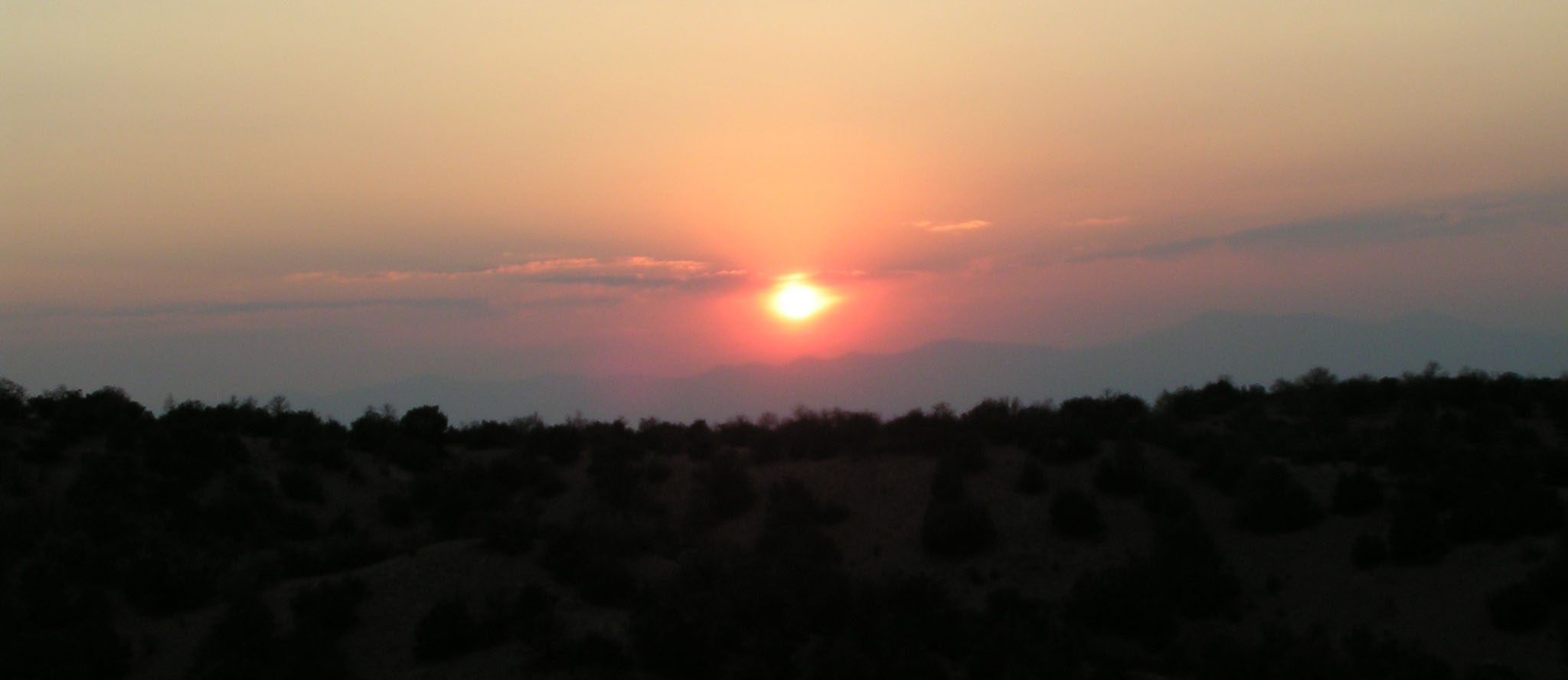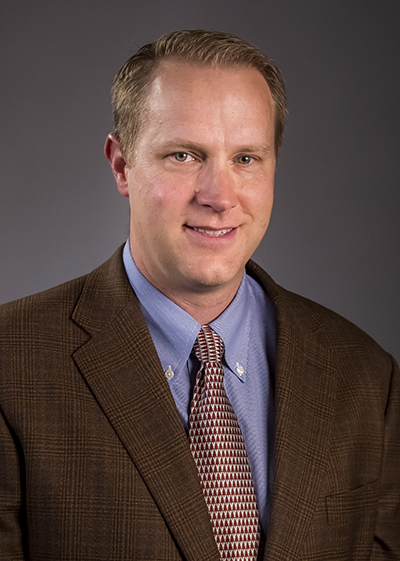Preparing for Disaster: UNM Hospital Participates in Region-Wide Emergency Training

Unhealthy Haze
UNM Researcher Explains How Wildfire Smoke Can Damage Your Lungs
Heads up – the haze from this summer’s western wildfires has created days where the landscape has taken on a science-fiction dimension – and that smoke that fills New Mexico’s skies comes with toxic materials that can affect even healthy people, according to Matt Campen, PhD, a professor of Pharmaceutical Sciences at the UNM College of Pharmacy.
“People generally don’t appreciate the immediate and long-term effects from breathing in wildfire smoke,” he says. “The kind of weather we have seen some days this summer can definitely lead to even healthy people developing symptoms such as chest congestion and airway constriction.”
A number of variables come into play when smoke travels the distances New Mexicans have seen during this summer’s wildfires, he says. The air most days with significant haze was scored as a “Yellow” warning, which calls for sensitive people to stay inside. Several days, though, were signaled as “Red,” where the air is considered unhealthy for everyone.
“We don’t know everything about those particles, but we do know it isn’t smoke just from forests burning but also the structures and cars getting burned up,” Campen says. “These particulates have traveled across the country and they have been exposed to sunlight, which we know can change the chemistry of the particulate in ways we don’t yet understand.”
Unhealthy days can even affect people who don’t normally experience breathing difficulties and people can react to wood smoke exposure for more than a week after the event, Campen says.
“It is hard enough for the lungs to stay clean when you are healthy,” he says. “On these days, even healthy people can have more mucous and coughing. If you already have asthma or COPD, it is very likely the air might trigger an asthma attack or exacerbation.”
When air enters the lungs, it goes through a maze of smaller and smaller tubes until it reaches tiny sacs call alveoli. The cells lining these sacs are responsible for exchanging oxygen and carbon dioxide within the body. They are very tiny, but the lungs contain hundreds of millions of them.
“Your lungs have a really high surface area because of all the tiny alveolar sacs within them,” Campen says.
If one could roll that surface area flat it would reveal a lung surface area the size of a tennis court, he says.
“The surface is huge – and then imagine all the dust of this smoke settling on those surfaces,” he says.
The job of scrubbing the lung area clean is left to specialized cells called macrophages, which identify and destroy pathogens – but they are not used to fighting the heavy onslaught of toxins wood smoke can bring into the lungs, according to Campen.
“It is like having a quarter of cup of macrophages to spread out and clean up that tennis court,” he says.
Long term, the pollution can impact the lungs in a number of ways. And, Campen doesn’t see the threat decreasing anytime soon.
“I think for five to 10 years we can expect more and more forest wildfires to happen. What we are seeing now isn’t the end of the story,” he says.
“You don’t even have to put climate change into the equation. We’re in the midst of historic droughts and you can add to that the demands placed on California to produce food and how that is impacting the available water supply,” he adds. “These are complicated issues, and I don’t see any change happening in the next few years that would result in fewer, smaller wildfires.”

People generally don’t appreciate the immediate and long-term effects from breathing in wildfire smoke.
Tips for Staying Safe on Heavy Wildfire Smoke Days
There are ways to help mitigate the damage that can be caused from breathing in this year’s wildfire smoke.
But first the bad news. That mask you have been wearing to protect you from COVID may not be enough to keep you safe from the negative effects of wood and wildfire smoke, according Campen.
You need a mask, but not just any mask will do. Wildfire smoke particles are much smaller than a virus, so shop for a N95 or N99 mask to protect the lung from damaging particulates, he says.
“Most people don’t realize the mask you are wearing for COVID is to prevent the spread of the disease that might be coming from your exhaled breath,” Campen says. “If you sneeze, that mask – be it a surgical one or one made from cloth – can reduce the spread of droplets from six feet down to as little as two feet.”
But a different dynamic is at play when wearing a mask to protect yourself from wildfire smoke, he says.
“Wood fire particles are much smaller than those of a virus – smaller than one micron, in general – and they have travelled thousands of miles. We know there can be all sorts of chemicals attached to those smoke particles and we know that the sun’s UV rays can change a particulate’s attributes, so you need an efficient mask,” he says.
And the bad news doesn’t end there.
“Some of the information on how to best avoid wood smoke exposure conflicts directly with COVID,” he says.
“For instance, swamp coolers can make things worse, since they will pull the smoke particulates down into a home,” he says.
“Ideally – instead of staying at home with a swamp cooler, we would recommend spending time in an air conditioned mall or theater to stay cool and breathe filtered air, but with COVID cases rising, such recommendations need to factor in social distancing for health,” he says.
When should you seek medical help?
“If you have known lung disease, you should know your symptoms, you should know when you feel bad and been exposed,” he says. “Certainly, don’t hesitate to contact your physician. If you have medication and you can control it then you should be OK.”
If the weather alerts turn to red and the haze is dramatic – as the Albuquerque area experienced earlier this month – then you are definitely going to see people showing up at ERs and hospitals.
“’Yellow’ days can cause a worsening of lung diseases such as asthma, COPD and bronchitis. ‘Red’ days can affect even usually healthy people,” he says.
“With that type of weather you are definitely going to see people who never thought they were sensitive start having symptoms, possibly with chest congestion and airway constriction,” Campen says.
“We do see a lag effect. There will be emergency room admissions for three to five days after an event like that,” he says. “People will have effects all week from that type of exposure.”
Here are some tips for mitigating wildfire smoke exposures:
- Wear a premium mask, such as an N-95 or N-99, if you need to go outside.
- Avoid exercise outside – you don’t want to be breathing heavily and pulling in even more toxic air.
- Stay indoors.
- Avoid using your swamp cooler and seek air conditioned spaces when it is hot.
- Know your symptoms and take medications when needed.
- Seek medical help if you begin having trouble breathing.
- Remember that there can be a delay of up to a week after exposure before symptoms show up.